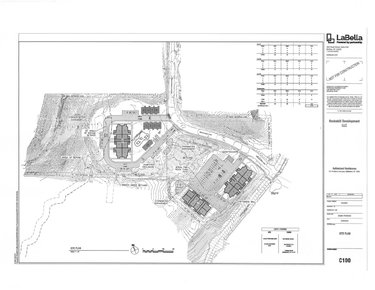Mercycare Lane proposal seeks exemption from building moratorium
GUILDERLAND — In order to meet state grant deadlines, the Guilderland Town Board at its May 20 meeting will be weighing a request from the developers of an income-restricted project to exempt the proposal from the town’s current building moratorium.
A moratorium on large-scale residential projects was adopted in May of last year. The board in March adopted a second moratorium as it reviews the update to the town’s two-decades-old land-use plan; the board can extend the moratorium for four months or in two two-month segments.
Projects already in the review process are not subject to the moratorium; no new applications will be accepted for developments of five or more single-family lots, for an apartment building with 25 or more units, or for an assisted-living or independent-living facility or a nursing home of 50 units or more.
The law adopted by the town board allows for exceptions in the case of “extraordinary hardship,” such as, “Whether the proposed application may: (1) propose workforce and/or affordable housing; (2) propose remedying a brownfield designated by the NYS Department of Environmental Conservation; (3) propose the use of vacant properties or buildings that may have contaminated soils or groundwater, such as vacant gas station or dry-cleaning sites; or (4) have a certificate of need for the proposed use that was issued by the NYS Department of Health.”
The developers of the 72-unit affordable and workforce housing proposal on Mercy Care Lane met with the Guilderland’s Development Planning Committee in December, when no formal application had been submitted to the town.
Members of the development team — which include developer Rockabill Development, engineering firm LaBella, and site owner First Columbia — explained to committee members that the former proposal for that site, Beacon Meadows, failed to secure funding through the state’s Homes and Community Renewal agency because the development had age restrictions placed on it.
The role of the committee, which is made up of various departmental staff, is to meet with prospective developers and provide them with feedback on topics such as traffic and environmental impacts, open space and street layout, stormwater management, and whether there’s enough infrastructure to accommodate such a proposal.
The letter to the town board states, “An affordable/workforce project was previously proposed on this site by Beacon Communities. Our project maintains an overall site layout consistent with the design approved by the Guilderland Planning Board.”
However, the letter continues, that the Rockabill proposal “closely aligns with the priorities and expectations” of the state’s Homes and Community Renewal agency.
“Beacon proposed an ‘intergenerational’ development that included seniors living with grandchildren; ultimately leading to multiple funding denials,” the letter says. “HCR has prioritized mixed-income general occupancy developments in Housing Opportunity Project Areas (“HOP”) such as Guilderland. Our Development focuses on a more traditional model targeting general occupancy working households.”
The letter states the developers have “spoken with HCR representatives who have confirmed this assumption, and believe it also fills a need identified by your community. In fact, HCR has encouraged us to pursue the Development with due haste given the considerable community need.”
The 6 and 10 Mercy Care Lane project proposes 100-percent workforce and affordable housing, targeting households with incomes ranging from 30 percent to 80 percent of the annual area median income, which according to the source and designated geographical location can be as low as $83,150 or as high as $116,000 — the Rockabill letter to the town board states the target annual incomes of residents would be approximately $30,000 to $90,000 per year, which would help address a need for trade, logistics, hospitality, and municipal employees.
Specifically, 80 percent of the units would be set aside for affordable households, those making between 30 and 60 percent of the area median income, with the remaining 20 percent reserved for workforce housing, those making 80 percent of the area median income.
“Securing an exemption is critical to meet the competitive [HCR] 9% Tax Credit Application deadline in Fall 2025, as local approvals like this boost scoring and funding chances,” the letter states. “Delays due to the moratorium could render the project financially unfeasible.”



